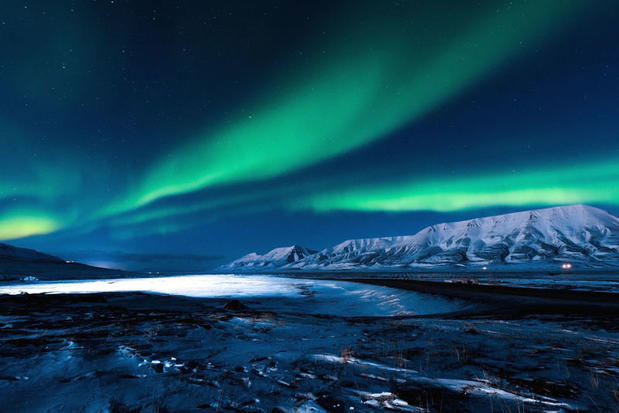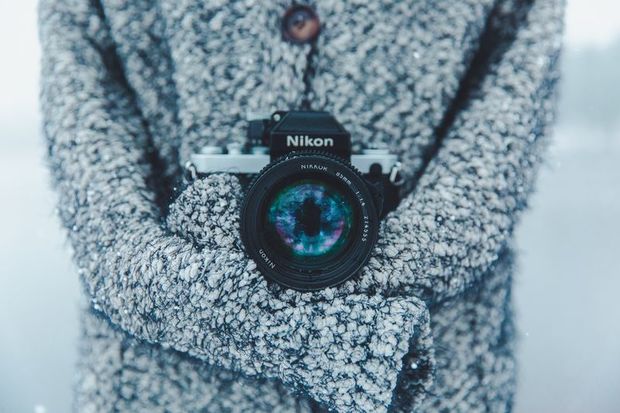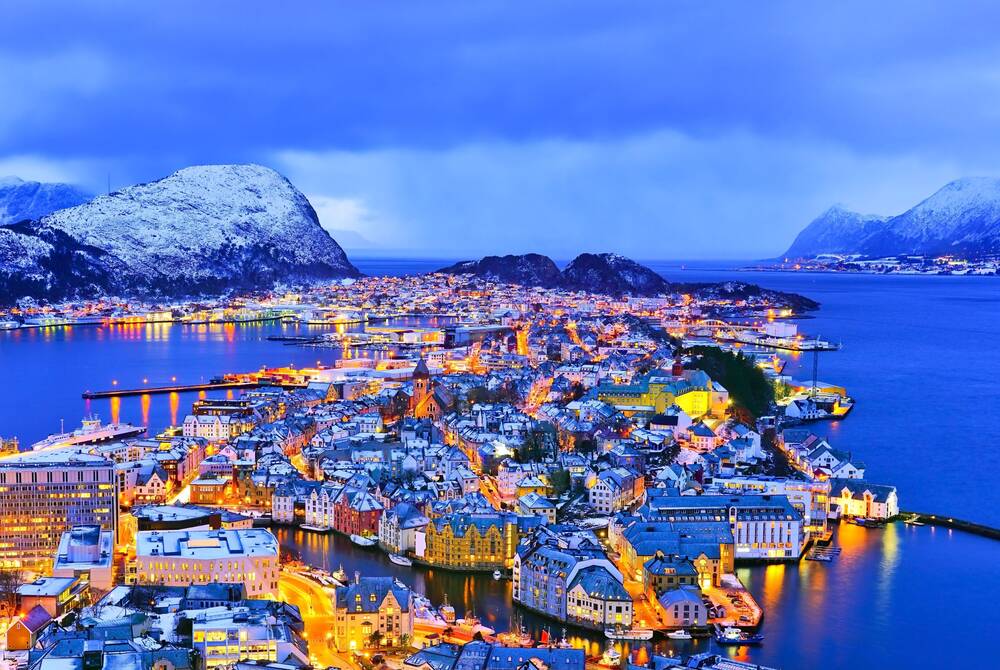Expert advice for your next Arctic adventure
Svalbard is one of the more unusual destinations out there, owing to its location halfway between northern Norway and the North Pole. It crosses the Arctic Circle, and takes the better part of two hours to fly from its nearest neighbour, Tromso. With a population of just over 2,500, the archipelago is a remote place, and that is precisely why we've fallen in love with it.
But that also means many of our travellers have questions about visiting, so here are our top pieces of practical advice for holidaying in Svalbard.
1. Know your seasons
The seasons in Svalbard are unlike those on the mainland. Midnight sun reigns from May to September, and from October to February you won't see sun at all. Summer makes for a great time to cruise, as the fjords are the best way of getting beyond Longyearbyen, but the winter is an excellent time to see the Northern Lights, as they can happen both morning and evening. And because we are regularly asked... no, you cannot see the aurora in the summer. It has to be dark!

Northern Lights in Svalbard - definitely a winter thing
2. Wear more layers than you think you need
Plenty of people had told me that I would be fine when snowmobiling, because we would be provided with warm, weatherproof suits, boots, mittens, balaclavas and helmets. That's all true, but these people had all been snowmobiling much further south in mainland Europe – and Spitsbergen has a very different climate. The wind chill on our snowmobiling trip was estimated to take the 'feels like' temperature to -30C or below, and while that was especially cold, it's best to be prepared.
Inspired? Explore our range of Svalbard holidays
3. Remember, it's air that keeps you warm
You'll want waterproof boots that are at least a size too large, to make space for you to wiggle your toes and ward off numbness, and also to hold a pocket of warm air against your feet. The same role goes for clothing – slightly loose garments with air in between each layer will act as better insulation than one thick layer or a number of skin-tight ones. Your hands will be warmest in mittens, though if you will be doing much outdoors (like operating a camera), you may want some with a removable top, or with thin gloves underneath.

Sturdy shoes and good-quality socks - Svalbard holiday essentials
4. Don't expect to travel independently
In all of Svalbard, an area approximately the size of Ireland, there are only about 46 kilometres of road, and the vast majority of that is in Longyearbyen, the Norwegian settlement where most residents live. Once you leave the settlement (whether this one, or one of the smaller ones in Barentsburg or Sveagruva), you are in true wilderness, and overconfident hikers and adventurers can very easily get lost or injured. If you have dreams of hiking camp to camp, you'll be disappointed – there aren't base camps to speak of. It's best to arrange a guide to come with you, who knows the land and can bring adequate supplies. You are also legally required to carry a rifle outside of the settlements, as curious (or hungry) polar bears can take unwitting visitors unawares – and as Svalbardians are familiar with this requirement, it's best to hire someone rather than attempt to manage this yourself.
Inspired? Explore our range of Svalbard holidays
5. Speaking of polar bears, don't worry
Polar bears are emblematic of Svalbard, and they are both very real, and very dangerous – they also outnumber human inhabitants of the archipelago. But they don't tend to come near humans unless they are particularly hungry, so your chances of seeing one without making a special effort are very small. They are also highly respected, and the attitude if one comes into your camp is likely to be astonishment, and anger that you did something wrong. Poaching is impossible, as every polar bear death is investigated by the governor, and the body belongs to the government and cannot be removed from the island. So rather than panic about the bears, it's best to learn a bit about their habitat, and if you are going into the wilderness, make sure not to camp on beaches (popular bear hangouts) and learn to set up a proper alarm.

6. Behave yourself, emergencies are no joke
There is only a small hospital in Longyearbyen, and while it can deal with some emergencies (given the wild terrain and local mine workers, it's a necessity), no one will be amused by a visitor ending up in A&E from alcohol-fuelled incidents or other preventable accidents. In fact, even residents can get barred from the islands if they have repeated run-ins with the law; I heard one story of a man who got into too many bar brawls and ended up having to leave for three years. Law enforcement is generally light, as the population is so small – doors are generally left unlocked – but dangerous behaviour is not appreciated.
Inspired? Explore our range of Svalbard holidays
7. Don't pack for fashion
No matter the season, Svalbardians are practical dressers, and restaurants and bars are similarly laid-back. You'll be fine in casual clothing most everywhere (though please do remove your shoes when going indoors), and if you plan to go to dinner somewhere a bit more formal like Restaurant Nansen, you can still wear jeans as long as you are generally presentable otherwise.

Dressing for the Arctic - it's all about warmth over style
8. Cosy socks beat slippers
Because people do remove shoes indoors, travellers are often advised to bring slippers. You certainly can, though most places will have slippers you can borrow, so there's no need to pack your own. Most people are just as comfortable in their own socks – and I recommend thick, woolly ones, both for warmth and because you'll wear them alone a lot.
Inspired? Explore our range of Svalbard holidays
9. It's okay to say when you're nervous
While your guides may be comfortable hopping on a snowmobile and charging through the tundra at 50 kilometres per hour, you may not be – and that's okay. I've seen travellers who worried about snowmobiling, who had a fear of dogs but wanted to try husky sledding, and who were claustrophobic but interested in ice caving. And everyone was able to be accommodated, so long as they told the guides in advance. The guides would far prefer making some arrangements for your own comfort – putting you as a passenger on someone else's snowmobile, or pairing you with a confident sledging partner – than have an emergency partway through an activity. It's true for cold, too – repeatedly, our guides insisted we tell them if we were cold, as it helped them keep a keen eye on our safety.
10. Bring backup batteries
If you're bringing a camera into the cold of a Svalbard winter, be prepared for the battery to drain incredibly fast, and have a backup on hand. Same goes for mobiles and other electronic devices.

So there you have it. 10 top tips from our specialists that will help you make the most of your Svalbard adventure. Remember, if you have any questions, don't hesitate to give the team a call.
Inspired? Explore our range of Svalbard holidays


